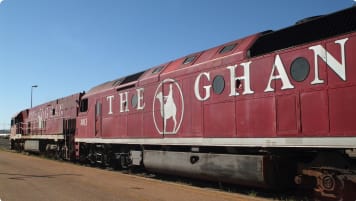Moonta, South Australia
Continued reading about South Australia and the "Copper Triangle" of Yorke Peninsula, Adelaide and British Settlement for senior couples and solo travellers on a small group tour by coach or air tour.
22 Jul 21 · 10 mins read
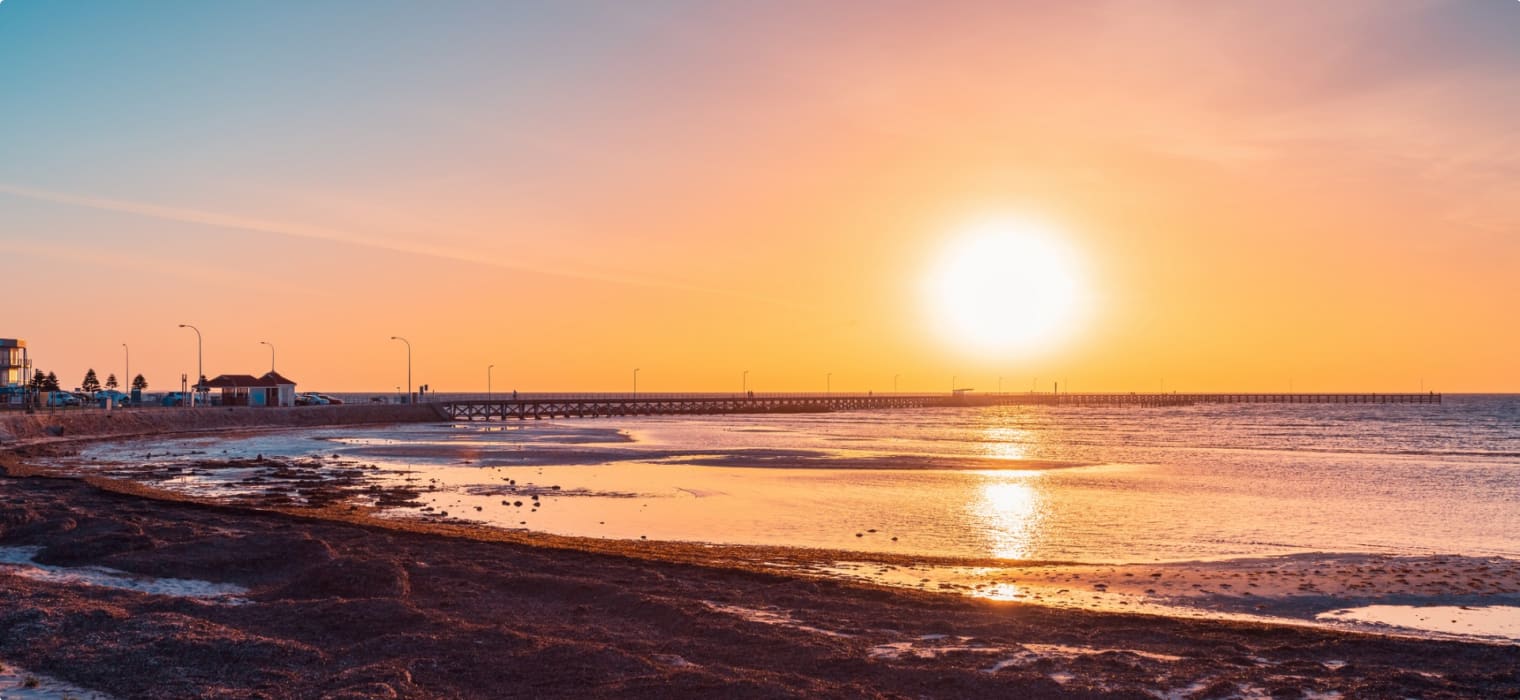
Moonta
Moonta, located on the Yorke Peninsula of South Australia, 165 kilometres from Adelaide, is steeped in history. Following the discovery of copper in the area in 1861, both the Moonta Mine and town developed rapidly and prospered. The mine soon became one of the richest in Australia, while the town in its hey day was the second largest in South Australia.
Although the closure of the mine in 1923 led to a rapid decline in the town’s population, the influence from this period is long-lasting, represented in the well-preserved architecture and culture brought over by Cornish miners. Today, a popular tourist destination, it is one of the three towns commonly known as the Copper triangle or “Little Cornwall”, along with Kadina and Wallaroo.
Much of the information from this article is drawn from the Copper Coast Council’s Discovering Historic Moonta. It explores the history of the Moonta Mine and town and the key Moonta tourist attractions, intended as background reading for Odyssey Traveller’s guided Tour of the Eyre and Yorke Peninsulas. During this small group tour, limited to 15 people, we visit the towns of the Copper Triangle and other hidden gems in South Australia. The tour is designed for mature and senior travellers, travelling as a couple or single traveller.
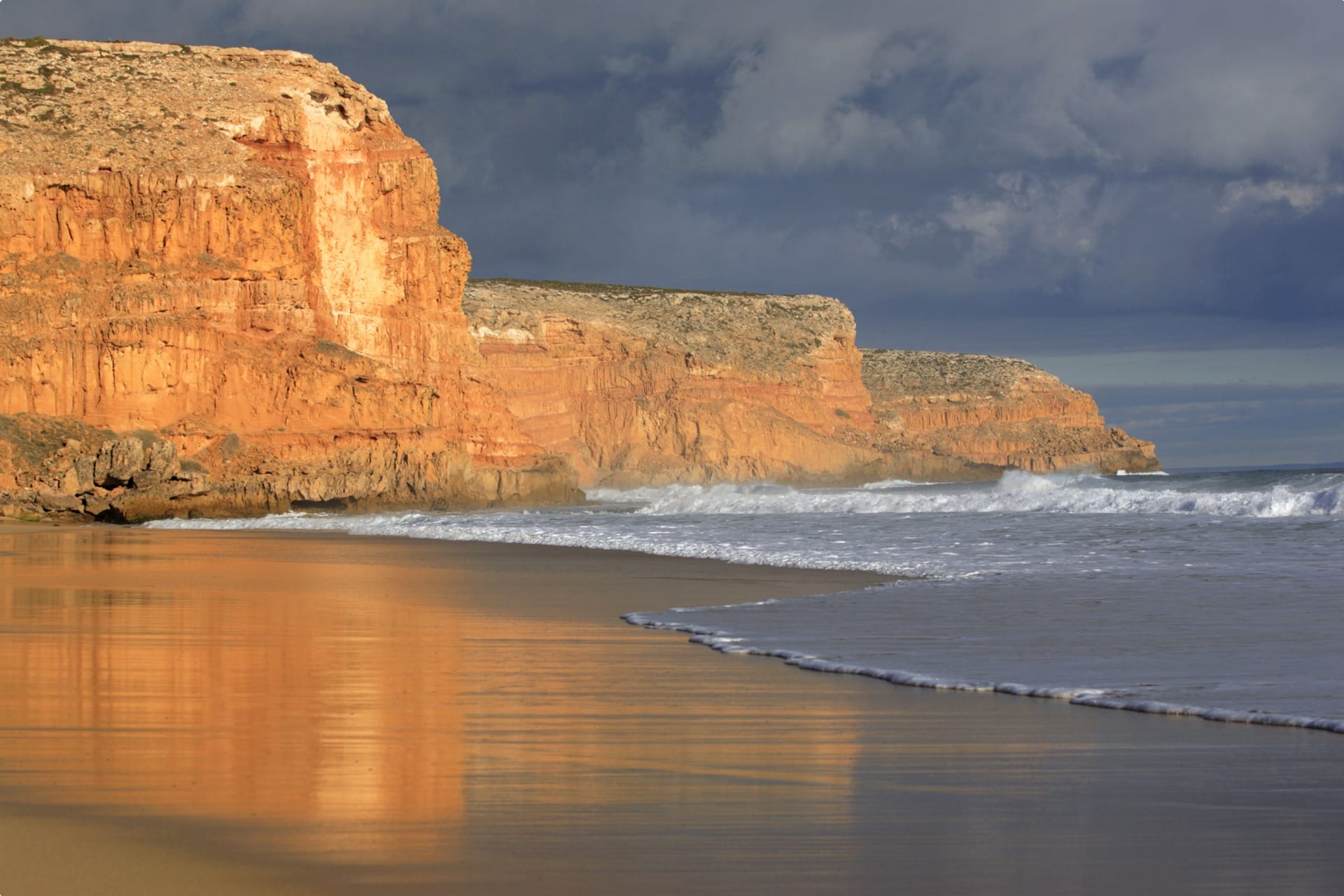
Moonta Mine
A Mining boom exploded across the Northern Yorke Peninsula after copper was discovered near Kadina in 1859. Copper was discovered at Moonta two years later in 1861 by the Shepard Patrick Ryan. The discovery was made in a patch of dense scrub, in earth burrowed out of a wombat hole, on the property of Walter Watson Hughes.
Hearing of the discovery, Hughes surveyed the site and was able to secure mining leases over the area, forming the Tipara Mining Association (later renamed the Moonta Mining Company). Operations began in late 1861, causing a rush of miners from the Burra and Wallaroo copper mines.
The discovery also created a rush for leases in the vicinity and numerous companies were formed including Karkarilla (later Hamley), Yelta, Paramatta, and Poona. However, none of these smaller mines would prove as rich or successful as the Moonta Mine. Rich from the outset, it produced nearly 5000 tons of ore worth £67,350 in its first year of operation.
The rich Moonta orebodies, or lodes, consisted of pegmatitic and quartzose veins filling fractures within a sequence of ancient volcanic rocks known as Moonta Porphyry. Five major lodes were discovered and worked within the mine area. The principal ore minerals in the Moonta lodes were chalcopyrite and bornite (copper sulphides) in a matrix of quartz, feldspar, and biotite. Concentrates averaged 20% copper.
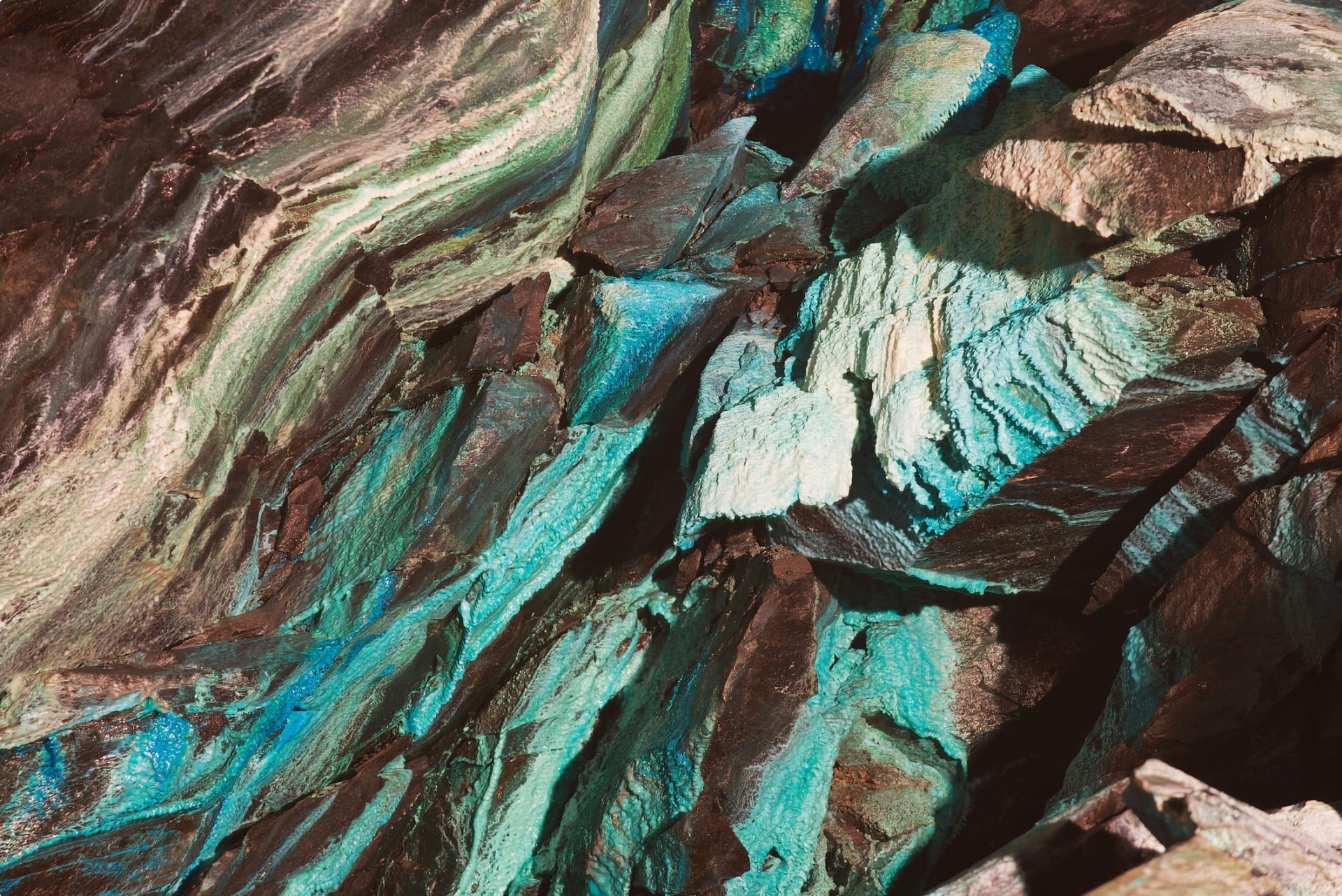
The mine was initially managed by Captain James Warmington and then, from October 1862, his brother William. Their other brother Eneder also gained the post of Captain at the nearby Wallaroo mine. Neither captain was able to establish a satisfactory working relationship with staff or workers, however, and by 1864 miners refused to work at both mines. An extensive strike ensued, with demands that both brothers be dismissed. When the companies refused to back them up, they announced their resignation.
Henry Richard Hancock took over as Chief Captain and Superintendent of both mines in 1864. Hancock would rule the mines for thirty-four years, maintaining strict discipline in his time. He was also responsible for numerous improvements at Moonta, such as the introduction of skips, the invention of the Hancock Jig, and the use of kibble, and he employed several local Aboriginal people on the mine.
By 1865, about 1200 men were employed at Moonta. Many of these were Cornishmen who had previously worked at Burra, Kapunda, or in the Victorian goldfields. However, the largest number of Moonta miners came direct from the tin mines in Cornwall, England, attracted from advertisements placed in local newspapers by the South Australian government. Experienced workers were offered free passages to South Australia to work in the mines and other industries to booster the colony’s development.
Employment reached a peak of nearly 1700 men in 1875. The following year, after many years of large dividends, the Moonta Mining Company became the first Australian mining company to pay over £1 million in dividends.
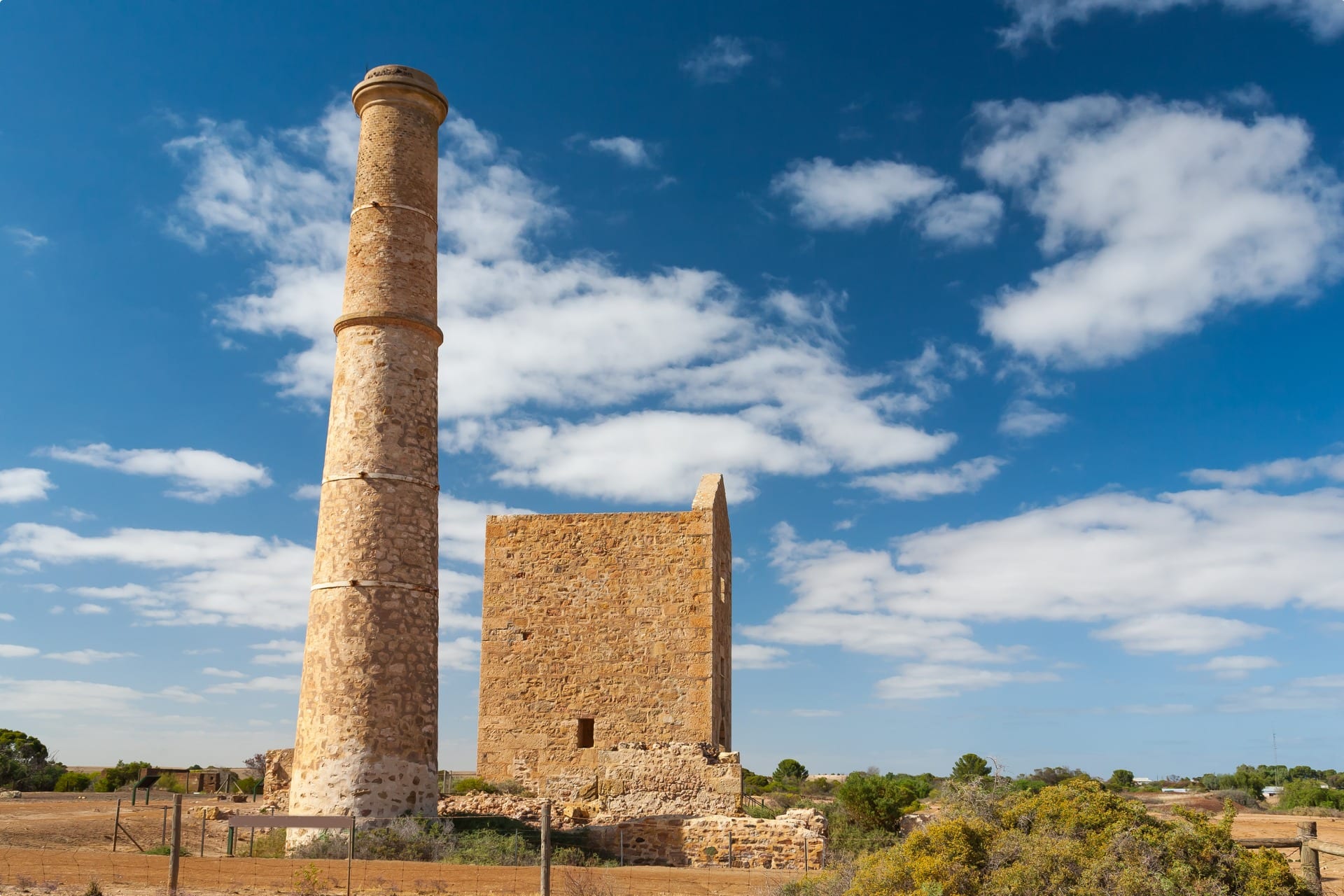
However, coppers prices dropped in the late 1870s, bringing widespread unemployment. Little development was carried out in the 1880s, with the low prices resulting in the company’s first losses. As a result, the company amalgamated with the Wallaroo mines to become the Wallaroo and Moonta Mining and Smelting Company in 1890. By this stage, ore worth £5.6 million had been raised from the Moonta Mine.
After 1900, lodes at Moonta became unproductive at depth and work was confined to extraction of ore above the 300 fathom (549 metre) level. By 1908 the average grade of copper had dropped to 4%, far below the 30% which had been mined in the 1860s. The Wallaroo Mine surpassed Moonta as the larger ore producer during this period, developed and modernised with great urgency.
The First World War saw a sharp rise in the value of copper, but subsequently world prices fell and, with limited ore reserves, activity and property at Moonta was further curtailed. In 1923, the company went into voluntary liquidation and mining operations ceased. The enormous stockpiles at Moonta, however, kept the smelters running until 1926. Total production of the Moonta mine from 1860 to 1923 was about 170,000 tonnes of copper metal valued at £10.7 million, of which about half was produced up to 1890.
Mining and prospecting resumed on a small scale during the 1930s Depression. Operations continued until 1938, largely through government unemployment relief funding. Although a financial loss, the scheme employed up to 70 men during this time. Smaller-scale operations recommenced in the area in the 1990s, and geological explorations now continue.
Moonta Town
The name “Moonta” is thought to be derived from munta-muntara or moontera, an Indigenous Narangga word meaning “thick scrub place” or “impenetrable scrub”. The Narangga Aboriginal people inhabited this area prior to European settlement, with their lands spread across the entire Yorke Peninsula.
The government township of Moonta was surveyed in March 1863 on a grassy plain midway between the shafts and the sea. It was laid out in a symmetrical grid pattern with a central square and surrounded by parkland reserves and a cemetery. Town lots were auctioned in April that year, with more than 230 sold, mostly to people from Adelaide.
Most miners lived out of town, building their own cottages on mining leases adjacent to the mine workings. A lack of social planning and the influence of the Cornish culture led to village settlement patterns, clustered around the mines themselves.
These settlements were overwhelmingly Cornish, consisting of miners’ cottages built in an ad-hoc fashion by arrangement with the mining companies, and the area was strikingly reminiscent of Cornwall. The earliest dwellings were of a primitive nature using pine and canvas, but, as mining became established, small squat cottages were built using wattle and daub or limestone rubble and clay.
With most miners living on mining leases, the first buildings to be established in Moonta were commercial buildings. The area east of the central square, along George and Ryan Streets, became the centre of business because of its proximity to the main road and the mines. In response to the prosperous mining operations after 1865, the commercial structure of the town began to expand, resulting in the town’s most vigorous building period, which continued to the mid-1870s.
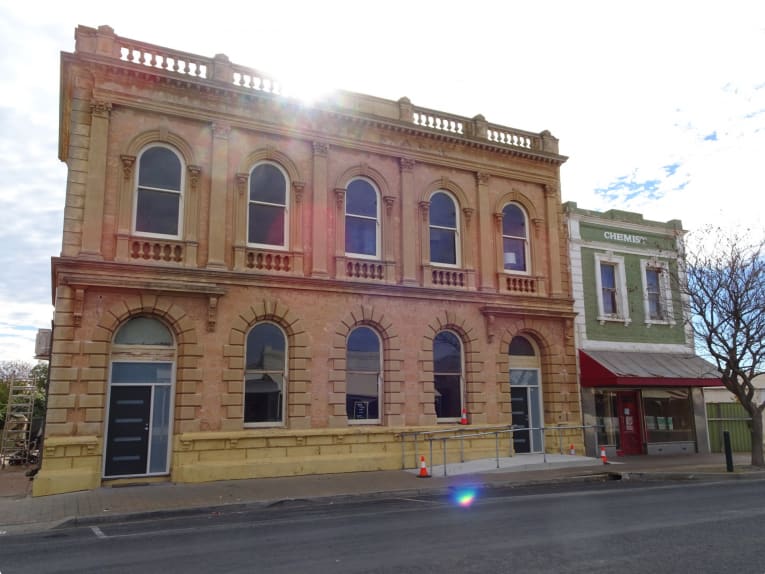
By 1875, the population of the Moonta district had reached 12,000, making it the largest town in country South Australia and the largest town in the whole colony after only Adelaide. It had also by this point surpassed Cornwall as the largest copper region in the British Empire.
When the mines flourished in 1900, the new prosperity was again reflected in further growth of the town. With the closure of the mines, however, the population rapidly declined, with only 1350 residents left by 1926. Many houses around the mines were left to ruin or were demolished.
The district was able to survive, however, successfully merging into dry land farming. Still today, Moonta’s surrounds are used for growing barley, wheat, legumes, canola, chickpeas, field peas, and more. Barley from the region is particularly renowned as some of the best in the world.

More recently the town has begun to prosper as a tourist destination, valued for its historical significance and preservation. Most of Moonta’s buildings were built in the period between 1865 and 1920 and are constructed of random limestone rubble walls with brick quoins and surrounds to openings. Housing styles range from early pug cottages to decorated Victorian villas with bay windows and ornate detail on verandas.
Local Attractions
Much of Moonta’s historical architecture can be seen along the Moonta Heritage Walk. This walk starts and finishes at the Town Hall, covering the main commercial area of Moonta which includes most of Moonta’s shops, hotels, banks, post office, meeting halls and several houses. Most of these were erected between 1863 and 1875 and many retain their authentic shop fronts and verandas.

Historic landmarks can also bee seen along the Moonta Heritage Trail, a leisurely drive of about 16km which can be completed in 1 to 2 hours. The trail takes visitors on a grand tour of over 60 sites within the town and adjacent mining settlements, giving a balanced impression of the history and development of the district.
The Moonta Mines Museum, located in the old Moonta Mines Model School building (1878), tells the fascinating story of the region’s copper mining heritage. In-depth displays over 14 rooms capture the Cornish miners’ lifestyles – at work and at home – in intimately preserved detail. This includes exhibits on the mines, lodges and friendly societies, sports and pastimes, death and hardships, and includes extensive collections of costumes, china, silverware, photographs, and memorabilia, as well as a classroom furnished c. 1900.
Built in 1870, the Miner’s Cottage and Garden is an excellent example of a typical, cramped miner’s cottage from the time. The kitchen and dining were built of sun-dried mud and glass bricks; the parlour and bedroom were erected thereafter from rammed clay, mud, and lime stones; and another two rooms were later added made of wattle and daub. Meanwhile, the outer walls were covered with a layer of lime and sand plaster and weatherproofed with lime wash. All are well-preserved today, while the interior also contains furniture, clothing, and artefacts of the era.
Another popular attraction, for adults and children alike, is the Old Sweet Shop. The building was originally the Moonta Mines Post Office, which operated between 1946 and the mid-1970s. Having changing hands numerous times since, it is now operated by volunteers, selling old fashioned sweets and drinks. The walls are lined with large jars and packets of sweets containing toffees, nougats, peppermints, and more.
There are also plenty of spots to swim at Moonta Bay and Port Hughes, both only a ten-minute drive from the town. The Moonta Bay jetty is a popular spot to take a dip during the day or cast a fishing line at dusk and dawn – while munching on locally made fish and chips of course! The bay is also known for its sailing, sailboarding and diving. Venture a little further south to enjoy the silky sand of Port Hughes, widely renowned as a fishing hot spot and boating destination.

Try to plan your visit to Moonta around the Kernewek Lowender, held every odd year in May, for an authentic Cornish festival. The festival spans over three towns, also in Kadina and Wallaroo, with each location hosting the festival for one day. The world’s largest Cornish Festival welcomes 45,000 people each time to join in the festivities and celebrate the area’s Cornish heritage. Events include traditional Cornish dancing, street parades, a classic cavalcade of cars and motorcycles, a pasty bake-off, concerts, ceremonies, markets, feasts, exhibitions, pub specials, art exhibitions and much more.
Tour of Moonta
During Odyssey Traveller’s Tour of Eyre & York Peninsulas and the Gawler Ranges we visit the historic towns of Moonta, Kadina, and Wallaroo, known as the Copper Triangle. Copper production ceased in 1923, but the industry continues to shape the culture of the area which is still known as Little Cornwall (or Copper Coast) thanks to the number of Cornish immigrants who worked in the copper industry.
This 15-day small group tour to the Yorke Peninsula, Eyre Peninsula, and the Gawler Ranges is designed for mature and senior travellers, travelling as a couple or single traveller, to discover the hidden gems of South Australia. You’re likely (rightly) familiar with the wine regions of the Barossa Valley, Clare Valley and McLaren Vale, the pristine scenery of Kangaroo Island, and the outback adventures offered on the stunning Flinders Ranges. Yet, the lesser-known western half of South Australia is a worthy rival for an Australia vacation, offering the pristine coasts of the Yorke Peninsula and Eyre Peninsula – often strikingly under developed compared to the East Coast of Australia – and the rugged landscapes of the Gawler Ranges. Delve deeper, and the visitor will find a fascinating journey and often unexpected South Australian history as they travel to this unique destination.
This tours, like all Odyssey Traveller small group tours, is limited to 15 people.
Our Australian tours are small group outback tours for seniors, designed for mature travellers who want an in-depth and authentic experience of their chosen destination. Since 1983, we have specialised in bringing Australian travellers to the world: now, our goal is to let you again rediscover your own country. We don’t just go from tourist stop to tourist stop, but aim to get off the beaten path, bringing to life some of the less-explored regions on your chosen Outback Australia tour. We want you to see Australia through new eyes as you travel, learning about geology, Aboriginal culture, native wildlife and local history as you pass through the ‘Wild West’ landscapes of Southern Australia.

Articles about Australia published by Odyssey Traveller:
- 19th Century South Australian Mining
- The Kimberley: A Definitive Guide
- Uncovering the Ancient History of Aboriginal Australia
- Aboriginal Land Use in the Mallee
- Mallee and Mulga: Two Iconic and Typically Inland Australian Plant Communities (By Dr. Sandy Scott).
- The Australian Outback: A Definitive Guide
- William Creek, South Australia
For all the articles Odyssey Traveller has published for mature aged and senior travellers, click through on this link.
External articles to assist you on your visit to Australia:
- UNESCO: Budj Bim Cultural Landscape and Willandra Lakes Region
- Finding Mungo Man: the moment Australia’s story suddenly changed
- A 42,000-Year-Old Man Finally Goes Home
- Fish traps and stone houses: New archaeological insights into Gunditjmara use of the Budj Bim lava flow of southwest Victoria over the past 7000 years
- ‘A big jump’: People might have lived in Australia twice as long as we thought
- Mildura, Victoria
- Righting the wrongs of the Sunraysia sultana’s confusing history
- Burra, South Australia: Travel guide and things to do
Related Tours
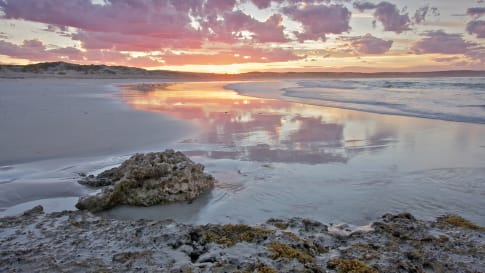
15 days
Sep, Dec, Jan, Feb, Mar +2Eyre & Yorke Peninsulas, and the Gawler Ranges
Visiting South Australia
Small group tour South Australia. Yorke, Eyre, and Gawler Ranges, discover the local history.
From A$10,350 AUD
View Tour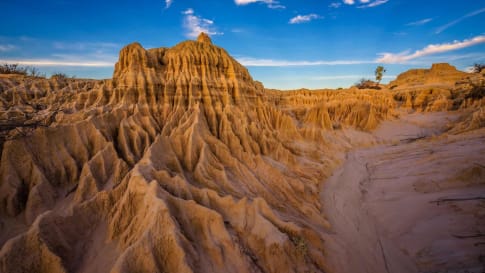
days
Mar, May, Aug, Sep, Oct +2Small group tour of World Heritage sites and more in the Southern States of Australia
Visiting New South Wales, South Australia
Discover the World Heritage Sites of the southern states of Australia travelling in a small group tour. A journey of learning around the southern edges of the Murray Darling basin and up to the upper southern part of this complex river basin north of Mildura. We start and end in Adelaide, stopping in Broken Hill, Mungo National Park and other significant locations.

days
Feb, Mar, May, Jul, Sep +2Guided small group motorcycle tour of World Heritage sites in Victoria and South Australia
Visiting
Discover the World Heritage Sites of the southern states of Australia travelling in a small group tour of like minded motorcyclists. A journey of learning around the southern edges of the Murray Darling basin and up to the upper southern part of this complex river basin north of Mildura. We start and end in Adelaide, stopping in Broken Hill, Mungo National Park and other significant locations.

days
Feb, Mar, Apr, May, Jul +2Small group Motorcycle tour of South Australia
Visiting South Australia
Escorted small group tour for senior motorcycle riders of the Flinders range in South Australia from Adelaide. Learn about Coober Pedy, Wilpena pound and water system of Lake Eyre as we explore and learn also about the history of the people who explored the Flinders.
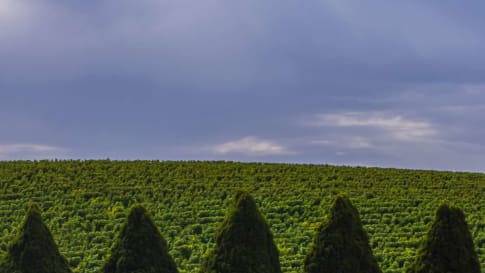
days
May, Aug, Sep, Oct, Nov +3Small group holidays to Adelaide and surrounds
Visiting South Australia
Explore and learn about on a small group tour of Adelaide city and its pastoral, cultural and historic settlement. Visit Fleurieu Peninsula, the Barossa valley, learn about William Morris and the arts and craft movement in the Art gallery and National trust houses.
Related Articles
19th Century South Australian Copper Triangle
Learn on a small group tour for couples and senior travellers for couples and solo travellers about the history of South Australian copper. Explore the Eyre peninsula, Lake Gardiner as well as Burra and the Flinders ranges.

Aboriginal culture of the Flinders Ranges, South Australia
The iconic Flinders Ranges of South Australia have a rich Aboriginal heritage and are home to a number of vitally important cultural sites and ancient artworks that this small group tour for mature and senior travellers has the opportunity its to learn about.

Australia’s Ocean Frontier: Exploring the Eyre Peninsula, South Australia
Learn about the landscape and the recent settlement of this Peninsula on the South Australian coast. To see and learn more join on the this collection of Australian small group package tours for mature and senior travellers, couples or singles or join the Eyre & York peninsula program.

Australian Outback Cattle King
These mature and senior programs for couples and senior travellers explore the outback Sidney Kidman sought to tame in the Channel country to the Birdsville track, Marree and Farina. Our escorted small group tours of the Australian interior explore history, cultures and landscapes that we experience as we travel from the previous time to the contemporary.

Burra, South Australia
Once the 5th largest town in Australia, (the 1840's) this article is about the copper mining boom that was at Burra, and also the Yorke Peninsula. Mining boom also occurred at Broken hill with the wealth heading to Adelaide and Melbourne. Learn more on a small group package tour for mature and senior travellers couples or singles that includes Burra or one of the Australian tours offered.

Expeditions of John McDouall Stuart in the Flinders.
John Stuart was an explorer who mapped the Flinders ranges as well as a path through the centre of Australia. The principal road from Port Augusta to Darwin is the Stuart Highway. The Small group tour of the Flinders ranges spends time learning about Stuart.
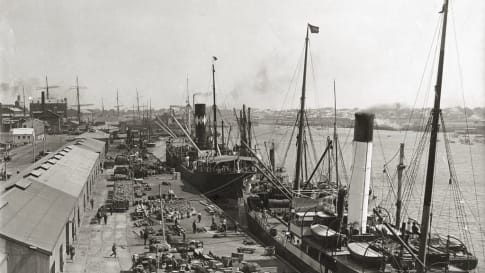
Exploring the museums of Port Adelaide, South Australia
8 days exploring Adelaide city and surrounds on small group tour for mature and senior travellers, couples and solo travellers visiting include Port Adelaide, The Barossa valley and Mclaren Vale and Fleurieu Peninsula.

History of the Fleurieu Peninsula, South Australia
Fleurieu Peninsula is part of a small group tour of Adelaide for mature and senior travellers seeking to travel as a couple or as a solo traveller. The Peninsula is historically important, click through to learn... It is also where you will find Mclaren Vale.

Marree and the Railway Track, South Australia
Learn more about the importance of this outback town in the settlement of Australia. Visited as part of our small group package tours for mature and senior travellers, couples or singles this is a town with history close to the Birdsville track and the Oodnadatta track.

Port Augusta, South Australia
Before European colonisation, the local Aboriginal people knew the area as Curdnatta, meaning 'sandy place'. The area was named Port Augusta in 1852. We learn more about Aboriginal culture and its evolution on this small group tour to the Flinders ranges.

Short history of Adelaide, Australia
The capital of South Australia, Adelaide has a fascinating and distinctive history as the only Australian state without a convict past. On both of these small group tours; Adelaide or the Flinders ranges we explore and learn about this city.

The expedition of Edward John Eyre, 1841
For mature and senior travellers on a small group tour into outback Australia, John Eyre is an explorer who extended the colonial knowledge of outback Australia. Escorted small group tours for couple and solo travellers extend your learning on Aboriginal outback history and the colonials.
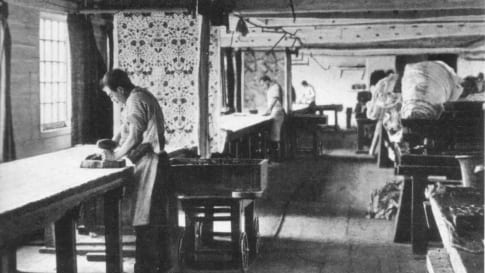
William Morris at the Art Gallery of South Australia
Adelaide has the Morris & Co. collection at the Art Gallery of South Australia, the world's second biggest collection of Morris decorative arts after the Victoria and Albert Museum, London. Learn more on this small group tour for mature travellers.



